If you’re a fan of luxurious leather goods, you may have heard about two materials used to make them: nubuck and suede. Both are popular choices for shoes and handbags, but what exactly is the difference between them? Read on to find out!
What Is Suede?
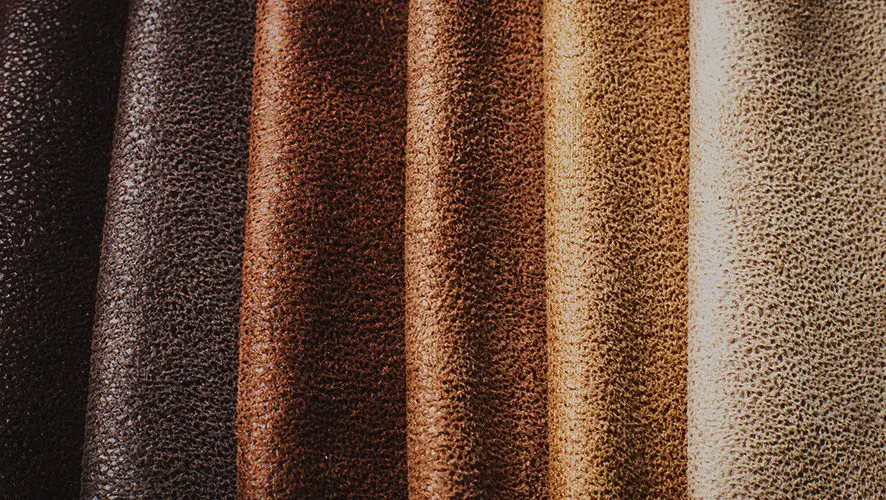
Suede is a type of leather that has been sanded or buffed on its “flesh” side to create a nap, or fuzzy surface. This napped finish gives suede shoes and bags their characteristic soft, velvety texture. Suede is usually made from cowhide, but can also be made from deerskin, lambskin, or goat.[1]
What Is Nubuck?
Nubuck is a top-grain leather that has been sanded and buffed to create a soft, velvety texture. It’s similar to suede, but it’s actually made from the outer layer of the hide which makes it more robust than its counterpart. Nubuck has an incredibly luxurious look and feel that’s popular with luxury product makers. As a result, you can expect good quality nubuck to be more expensive than suede.[1]
How To Distinguish Nubuck Leather From Suede Leather?
The easiest way to distinguish between nubuck and suede leather is by their texture. Nubuck leather has a smooth, velvety surface, while suede has a soft, fuzzy nap. It’s easy to tell them apart just by looking at and feeling the two materials side-by-side.[6]
Origins Of Nubuck And Suede
Nubuck and suede are both popular leather materials, but where do they come from? Nubuck is a top-grain leather that has been sanded or buffed on the grain side, creating a nap of short protein fibers. This gives it a soft, velvety texture; it’s often compared to velvet. The nap of nubuck is less than suede, which is created from the underside of a hide. Suede is made from splitting the skin into two or more thicknesses, then sanding and buffing one side to create that distressed look.
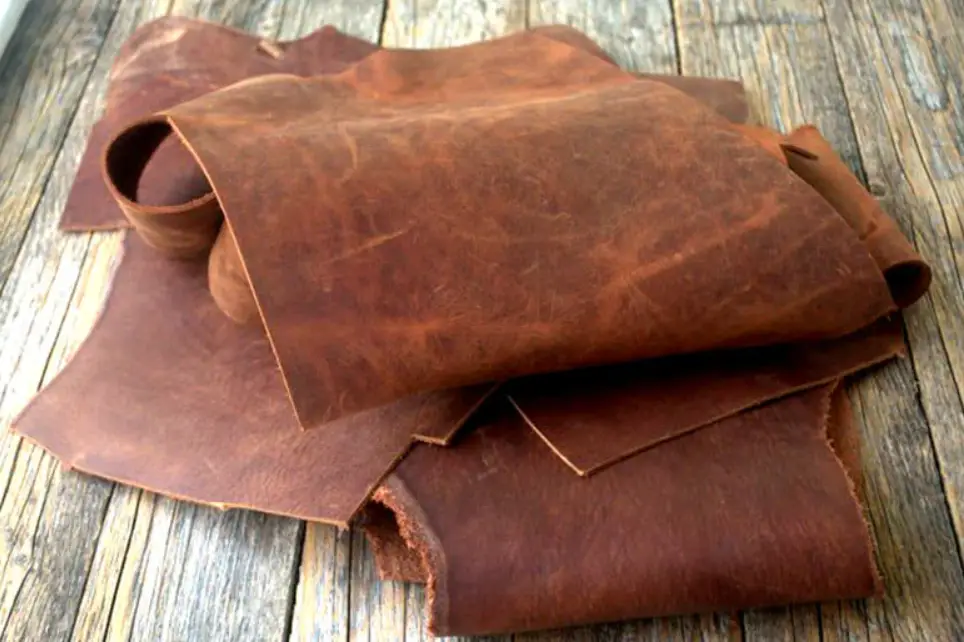
Nubuck and suede have been used for centuries in furniture, apparel, and footwear. But it wasn’t until the 20th century that these materials really took off. In the 1960s, designers began using them to create fashion statements. Since then, nubuck and suede have been seen on everything from shoes to handbags to jackets to belts.[2]
Benefits Of Nubuck And Suede
Nubuck and suede are two of the most popular materials used in shoes, apparel, and accessories. They have their own unique advantages which make them very desirable to many people. Here is a brief overview of the benefits that nubuck and suede offer:
- Durability: Both nubuck and suede are very durable and will last for years with proper care.
- Waterproof: Nubuck and suede are both water resistant, meaning they won’t get ruined if they are exposed to a bit of rain or spilled liquid.
- Comfort: Both materials provide a comfortable fit and feel, making them perfect for shoes and apparel.
- Style: Nubuck and suede both have a classic look that never goes out of fashion, so you will always look stylish with these materials.
- Versatility: Thanks to their variety of colors and textures, nubuck and suede can be used for different types of clothing or accessories, allowing you to create a unique look that suits your style.[2]
Disadvantages Of Nubuck And Suede
Both nubuck and suede have some drawbacks to consider. Nubuck is sensitive to water; it can be ruined if exposed for too long, so you must be extra careful when cleaning or wearing nubuck in wet conditions. Suede ages quickly, and although its soft texture provides comfort, it can become easily worn over time. Additionally, both materials are difficult to clean and require specialized treatments to keep them looking their best; if these treatments are not done correctly, they could damage the material. It’s important to note that neither nubuck nor suede is waterproof; they will both become stained or ruined if exposed to water.
Finally, some people feel that nubuck and suede are not as durable as leather, so they may require more frequent replacement. For this reason, it’s important to take good care of your shoes and avoid exposing them to any harsh conditions.[2]
Uses Of Nubuck.
Nubuck is a great material for making bags, shoes, and other accessories. It’s also popular for upholstery and furniture due to its durability and luxurious feel. Nubuck can be dyed in various colors to match any aesthetic and style. Because of its breathable nature, it’s often used in outdoor products such as camping bags, jackets, and tents. Nubuck is also a great choice for making gloves as it provides extra grip.[2]
Uses Of Suede
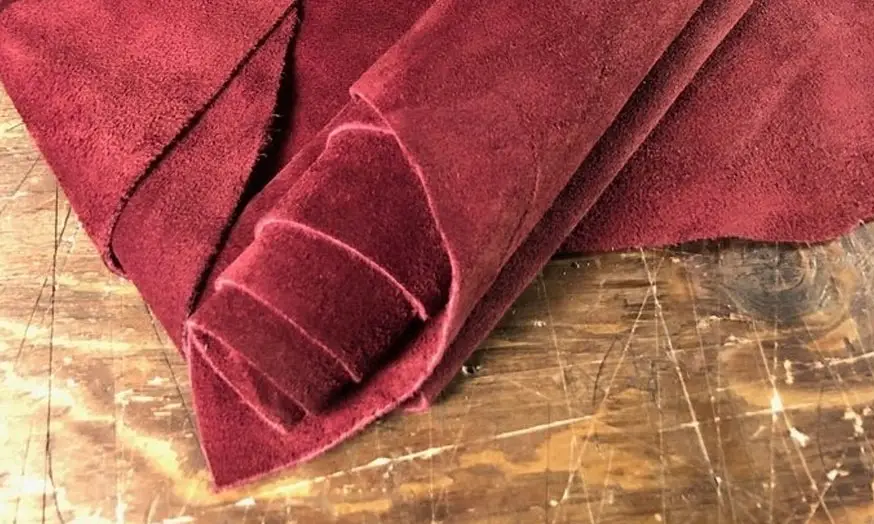
Suede is most commonly used in fashion products such as handbags, shoes, and clothing accessories. It looks luxurious and elegant, yet still comfortable and breathable. You can find suede in various colors and patterns, making it the perfect choice for fashion-forward people. It’s also used in furniture upholstery for its softness and plush feel. Furthermore, its flexibility makes it ideal for crafting wallets and other small accessories.
Whether you’re looking to make something fashionable or practical, both nubuck and suede are great materials to consider. They both offer unique looks, benefits, and uses that will make any project stand out from the rest. With a little bit of research, you’ll easily be able to decide which material is best for your needs.[2]
How To Clean Nubuck?
When cleaning nubuck, it’s important to be gentle with the material. The best way to clean your nubuck leather is with a soft brush and lukewarm water. Dip the brush in the water, and then use it to scrub away any dirt or debris from the leather. You can also use a mild soap or leather cleaner, but make sure to test it on a hidden spot first. After you have finished scrubbing the nubuck, take a damp rag and wipe away any excess soap or water. Finally, use a dry cloth to buff the leather and help restore its original shine.[2]
How To Clean Suede?
If you’ve got a pair of suede shoes, boots or other item that needs cleaning, there are some tried-and-true methods for removing dirt and stains.
To start, it’s important to brush off any loose particles from the surface of your suede with a soft bristled brush. This will help prevent dirt and debris from settling into the material.
Some suede cleaners come in foam or eraser form; others require water and a scrubbing brush. Always read the packaging instructions before use, and test any cleaning method on an inconspicuous area of your suede before tackling a stain directly.[2]
How To Protect Nubuck And Suede?
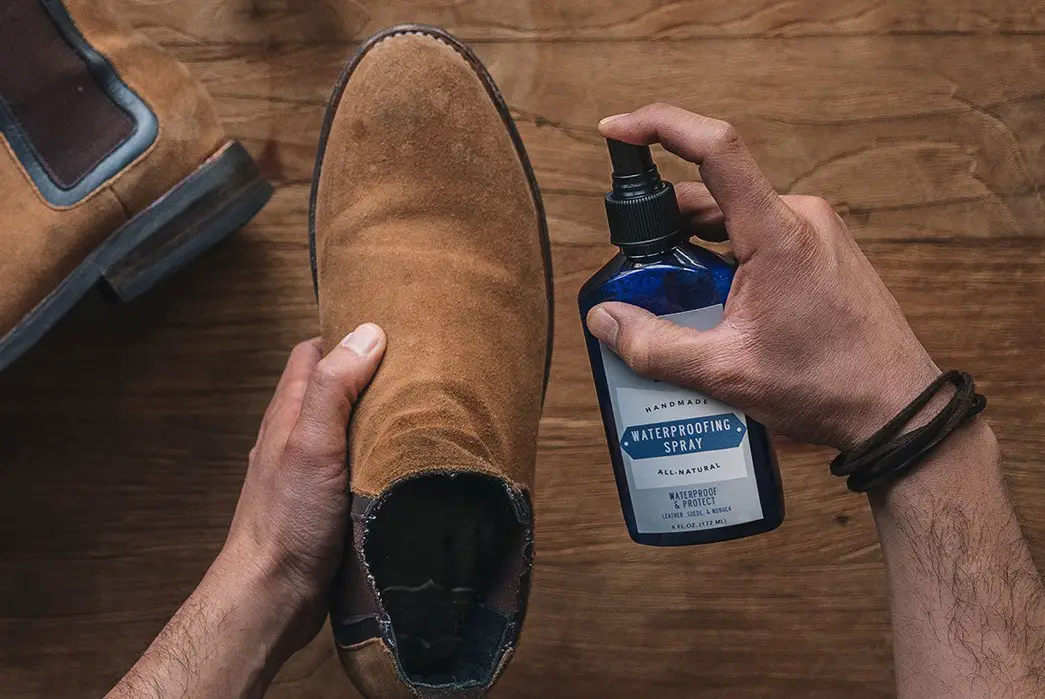
Nubuck and suede both benefit from regular cleaning and protection to keep them looking their best. Nubuck is more susceptible to stains, so it’s important to use a protective spray before wearing or after exposure to dirt or moisture. You can also treat nubuck with a waterproofing product, which should be reapplied every few months.
Suede should also be sprayed with a protective product before wearing, as well as after exposure to dirt or water. A brush or suede eraser can help remove any dirt and debris that accumulates on the surface without damaging it. It’s best to clean suede shoes by hand using a soft, damp cloth, and avoid using chemical cleaners or solvents.[6]
Comparison Of Suede And Nubuck Leather
Knowing the difference between suede and nubuck leather can help you choose the right product for your needs.
Suede is a type of fabric that’s made from split leather, which is produced by splitting the top grain layer of hide. This split-leather has a thin, velvety nap on one side that gives it a soft, fuzzy feel. It’s usually used for clothing, furniture, upholstery and bags.
Nubuck, on the other hand, is top-grain leather that has been sanded or buffed to create a slight nap. This gives it a velvety surface and makes it more velvety and softer than regular leather. Nubuck is usually used for shoes, clothing and furniture upholstery.
The main difference between the two types of leather is in their look and feel. Suede has a smoother surface than nubuck, while nubuck has a more textured appearance that’s closer to that of regular leather. The nap on nubuck is also more visible than on suede, which gives it a unique look.[3]
Caring For Suede And Nubuck Leather
Caring for your suede and nubuck leather shoes is an important step in protecting them. Here are some general tips to help you keep your shoes looking their best:
- Use a brush or cloth designed for cleaning suede or nubuck. Regular brushes can damage the delicate surface of these materials.
- Avoid using any cleaning chemicals or detergents; these can damage the surface of your shoes.
- Use a suede and nubuck protectant spray to help repel dirt and water.
- For tougher stains, try using a pencil eraser or special suede eraser.
- If your suede and nubuck shoes get wet, let them air-dry in a cool, well-ventilated area. Never put them in the dryer or near a heat source.
- After cleaning and conditioning your suede and nubuck shoes, you can use a brush to help restore the nap of the leather.[3]
When Should You Choose Suede?
Suede is a luxurious material with a unique look and feel, making it perfect for stylish fashion items. It works well in shoes, purses, jackets, and other apparel. However, it may not be the best choice for items that need to endure a lot of wear-and-tear—suede is more delicate than nubuck.
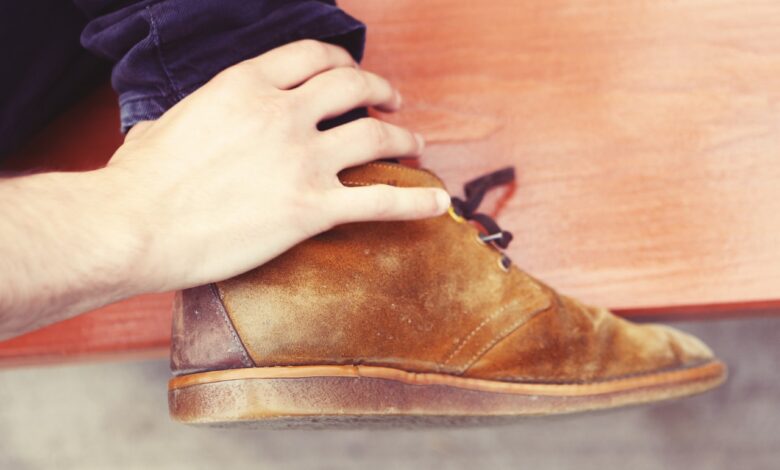
Suede is also a great choice for fashion items that you don’t plan to use often. For example, if you’re looking for a special pair of shoes or a purse for formal occasions, suede will give you the extra touch of style and elegance.
Lastly, if budget is an issue, suede can be a more affordable choice than nubuck. It’s also easier to find because it’s made from cowhide instead of the more expensive goat hide used in nubuck.[4]
When Should You Choose Nubuck?
Nubuck is an ideal choice if you’re looking for a more durable material that will still look good. It’s also the best option if you want a leather-like texture but don’t need the full protection of suede. Nubuck can be used in countless projects, including shoes, jackets, and bags.[4]
Why Do Most People Love Suede?
Suede is a popular material for shoes, clothing, bags and other accessories. Its unique softness and luxurious feel are what make it so desirable among fashionistas. The suede surface has a very distinct look with its fuzzy nap and velvety texture that adds style to any outfit.
It also has several practical benefits. Suede is very durable, making it great for shoes that need to stand up to regular wear and tear. It’s also quite water-resistant, so it’ll keep your feet dry even in wet conditions. And because of its breathable surface, suede can be a good choice for those who are prone to sweaty feet.
Finally, suede is relatively easy to care for. With regular brushing and cleaning, you can keep your suede shoes looking like new. Whether you’re a fashionista or just want a pair of comfy shoes that will last forever, suede is definitely worth considering.[5]
Why Do Most People Love Nubuck?
Nubuck is a type of full-grain leather that has been buffed to create a soft, velvety surface. This special treatment gives it a luxurious feel and look, making it popular in the fashion world. It’s also incredibly durable and easy to clean, especially when compared to suede.
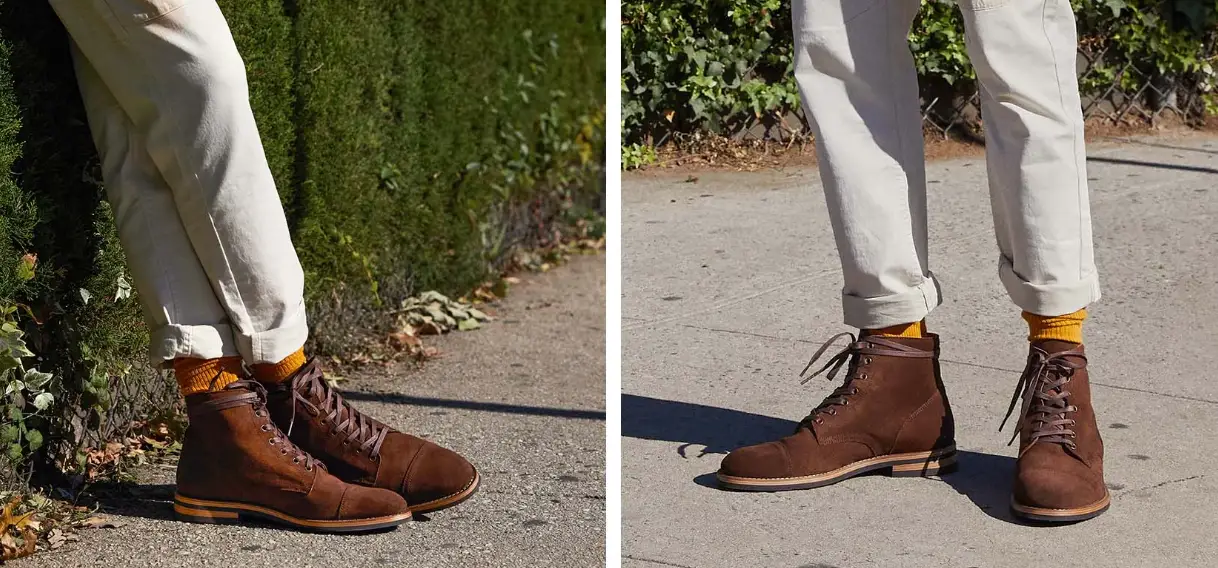
Because nubuck is treated with a special process that keeps the grain intact, it’s both breathable and waterproof. This makes it ideal for shoes, bags, and other outerwear items that will be exposed to elements like rain or snow. It’s also resistant to scratching and scuffing, so you don’t have to worry about your precious nubuck items being ruined.
Finally, nubuck is available in a variety of colors and finishes that can be used to match any outfit or look. Whether you prefer a classic tan color or something more modern like black or navy blue, there’s sure to be an option that works for you.[5]
How To Spot The Good, The Bad, And The Ugly?
When it comes to shopping for nubuck and suede, there are a few things you should look out for. Good quality nubuck will be soft and velvety with a nap that is slightly raised and uniform in color. If the nap is too low, or non-uniform in color then this could indicate lower quality leather.
When it comes to suede, good quality suede is also soft and velvety with a nap that is evenly raised across the surface. If you see any inconsistencies in the nap or if the leather looks too “shiny” this could indicate lower quality as well. Also, beware of faux/imitation leathers that may appear to be nubuck or suede. You can usually tell the difference by looking for a tag labeled “Nubuck” or “Suede” on the item.[5]
FAQ
Which Is Better: Suede Or Nubuck?
There is no clear answer to this question as both materials have their own unique characteristics. It all depends on the purpose you are looking for and your personal preferences. Suede has a softer, more luxurious feel whereas Nubuck offers a more rugged and versatile look. If durability is important to you, then Nubuck may be the better choice, as it can withstand more wear and tear without showing signs of deterioration.
Is Suede Cheaper Than Nubuck?
No, both suede and Nubuck can be found at a variety of prices. Generally speaking, there is no significant difference in cost between the two when comparing similar quality materials. It all depends on where you purchase the material from and what type of leather it is made from.
Is Suede Or Nubuck Easier To Clean?
Suede is considered to be the most difficult of the two materials to clean because it can easily become stained and scuffed. Nubuck, on the other hand, is much easier to maintain due to its smoother surface. You can clean both materials with a damp cloth or special leather cleaners that are designed for use on either material.
Can Nubuck Get Wet?
Yes, Nubuck can get wet but it should be cleaned and dried immediately to prevent any staining or discoloration. Additionally, you should avoid using harsh chemical cleaners on the material as that could cause damage.
Can You Clean Nubuck With Water?
Yes, you can clean Nubuck with water as long as it is not excessively wet. It is best to use a damp cloth or special leather cleaner when cleaning the material, and then dry it immediately with a soft cotton cloth. Be sure to avoid using any harsh chemical cleaners on the material as they could cause damage.
Does Nubuck Scratch Easily?
No, Nubuck is more resistant to scratches than suede. However, it can still be scratched if exposed to rough materials or abrasive surfaces. To avoid damaging the material, make sure to clean and store your Nubuck items carefully and keep them away from sharp objects.
Can You Moisturize Nubuck?
Yes, you can moisturize Nubuck with a leather conditioner. Be sure to use one specifically designed for Nubuck and follow the instructions carefully. It is best to apply the conditioner sparingly and avoid using too much as this could cause staining or discoloration.
Useful Video: Suede Vs Nubuck – What’s the Difference?
Conclusion
In the end, it all comes down to knowing what kind of material you need for your next project or purchase. Nubuck is a top-grain leather that has been buffed to create a velvety surface, while suede is the underside of animal hide split into two pieces. Both materials are luxurious and have unique attributes that make them the perfect choice for specific applications. Nubuck is more durable and waterproof, while suede is softer and has a luxurious look. However, if you must choose one over the other, then consider your needs carefully: are you looking for something that will last longer or just something that looks luxurious? Ultimately, it all depends on what you need. We hope that this article has made the differences between nubuck and suede more clear so that you can make an informed decision!
Happy shopping!
References
- https://stridewise.com/nubuck-vs-suede/
- https://www.carlfriedrik.com/int/magazine/nubuck-vs-suede
- https://www.beckettsimonon.com/blogs/resources/the-difference-between-suede-and-nubuck
- https://bootspy.com/nubuck-vs-suede/
- https://olivercabell.com/blogs/helpful-hints/nubuck-vs-suede-shoes-which-is-splurge-worthy
- https://buyleatheronline.com/en/blog/what-are-the-differences-between-nubuck-leather-hides-and-suede-leather-n33

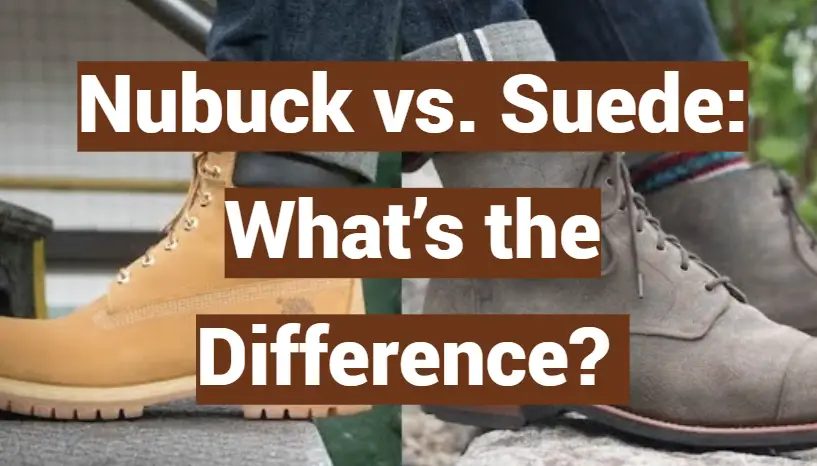
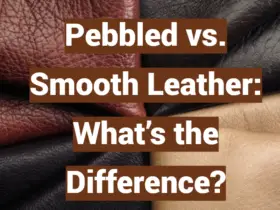

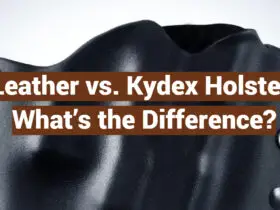


Leave a Reply